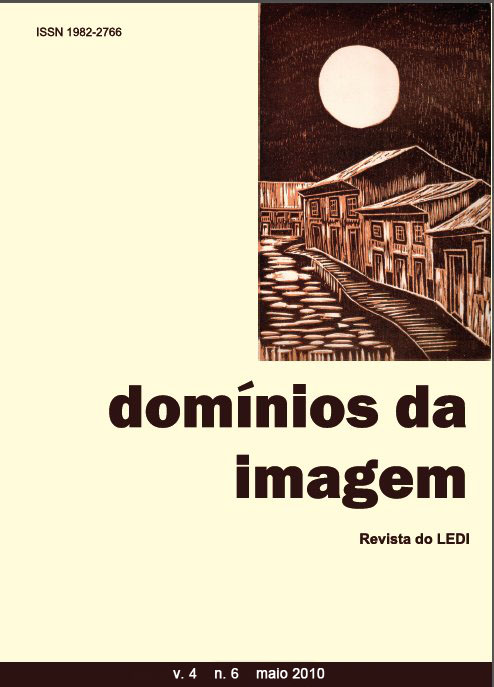The dispute of the imaginary: the representations of cangaço in national cinema (1950)
DOI:
https://doi.org/10.5433/2237-9126.2010v4n6p67Keywords:
History, Movies, "Cangaço", Representations and imaginary.Abstract
The people's imaginary over the folklore splinter group of the "cangaço", inspired popular traditional poetry, songs, and several films, produced in Brazil. As a result, we invite the reader to think about the film Industry in the 1950s, starting with the film "O Cangaceiro (The Bandit)" by the movie maker Lima Barreto who with this motion picture launched a new film language, the western line. In the perspective of the imaginary what this article intends to do is to get through films like "O Cangaceiro (The Bandit)" and discuss the myth of "cangaço", which is their way of living. This film has initiated ideas and representations that are linked; to the movement; its geographical area, the Brazilian Northeast; to issues related to violence; to the debate between the archaic and modern; and to the approaches given to the movement by their characters. This article focuses on the possibilities of the relationship cinema history, and the cinema itself as a source of research.Downloads
References
BALANDIER, Georges. O poder em Cena. Brasília: UnB, 1982. p.41-60.
BERNADET, Lucila Ribeiro; RAMALHO Jr., Francisco. Cangaço - da vontade de se sentir enquadrado. In: CAETANO, Maria do Rosário. Cangaço: o nordestern brasileiro. Brasília: Avathar, 2005.
BACZKO, Bronislaw. Imaginação social.. Enciclopédia Einaudi. V.5 (Anthropos-Homem). Lisboa: Imprensa Nacional; Casa da Moeda, 1985. p. 296-335.
CHARTIER, Roger. A História Cultural: entre praticas e representações. Rio de Janeiro: Bertrand Brasil, 1990.
CERQUEIRA, J. Luciano. Cangaceiros e "Cowboys": indicadores para um estudo comparativo. In: CLIO. Revista do Curso de Mestrado em História, Recife, n.111, p. 119-129, 1980.
JASMIM, Elise. Cangaceiros. São Paulo: Terceiro Nome, 2006.
LEITE, Sidney Ferreira. Cinema brasileiro. Das origens à Retomada. São Paulo: Fundação Perseu Abramo, 2005.
PORTELLI, Hugues. Gramsci e o bloco Histórico. Rio de Janeiro: Paz e Terra, 1977.
MELLO, Frederico Pernambucano de. Guerreiros do Sol: violência e banditismo no Nordeste do Brasil. Girafa Editora. Alagoas, 2005. p. 87-111.
MELLO, Frederico Pernambucano de. Eunuco Nordestino. Nossa História, nov. 2004. p. 56-62.
MARX, Karl; ENGELS, Friedrich. O Manifesto do Partido Comunista 150 anos depois. Rio de Janeiro; São Paulo: Contraponto; Fundação Perseu Abramo, 1998.
NEVES, Erivaldo Fagundes. Sertão como recorte espacial e como imaginário cultural. Politeia: Hist. e Soc. Vitória da Conquista, v. 3, n. 1, 2003, p. 153-162.
ROCHA, Glauber. Glauber Rocha: revisão crítica do cinema brasileiro. São Paulo: Cosac & Naify, 2003.
TOLENTINO, Célia Aparecida Ferreira. O Rural no cinema brasileiro. São Paulo: Ed. UNESP, 2001.
THOMPSON, E. P. Costumes em comum. São Paulo: Companhia das Letras, 1998.
XAVIER, Ismael. Sertão mar: Glauber Rocha e a estética da fome. São Paulo: Brasiliense, 1983.
Downloads
Published
How to Cite
Issue
Section
License
Copyright (c) 2010 Domínios da ImagemDomínios da Imagem adopts the Creative Commons Attribution 4.0 International License, therefore, the copyrights related to the published articles belong to the author(s), who grant the journal the exclusive right of first publication.
Under this license it is possible to: Share - copy and redistribute the material in any medium or format. Adapt - remix, transform, and build upon the material, giving due credit and providing a link to the license and indicating if changes were made.












 The works in this journal are licensed under Creative Commons .
The works in this journal are licensed under Creative Commons .